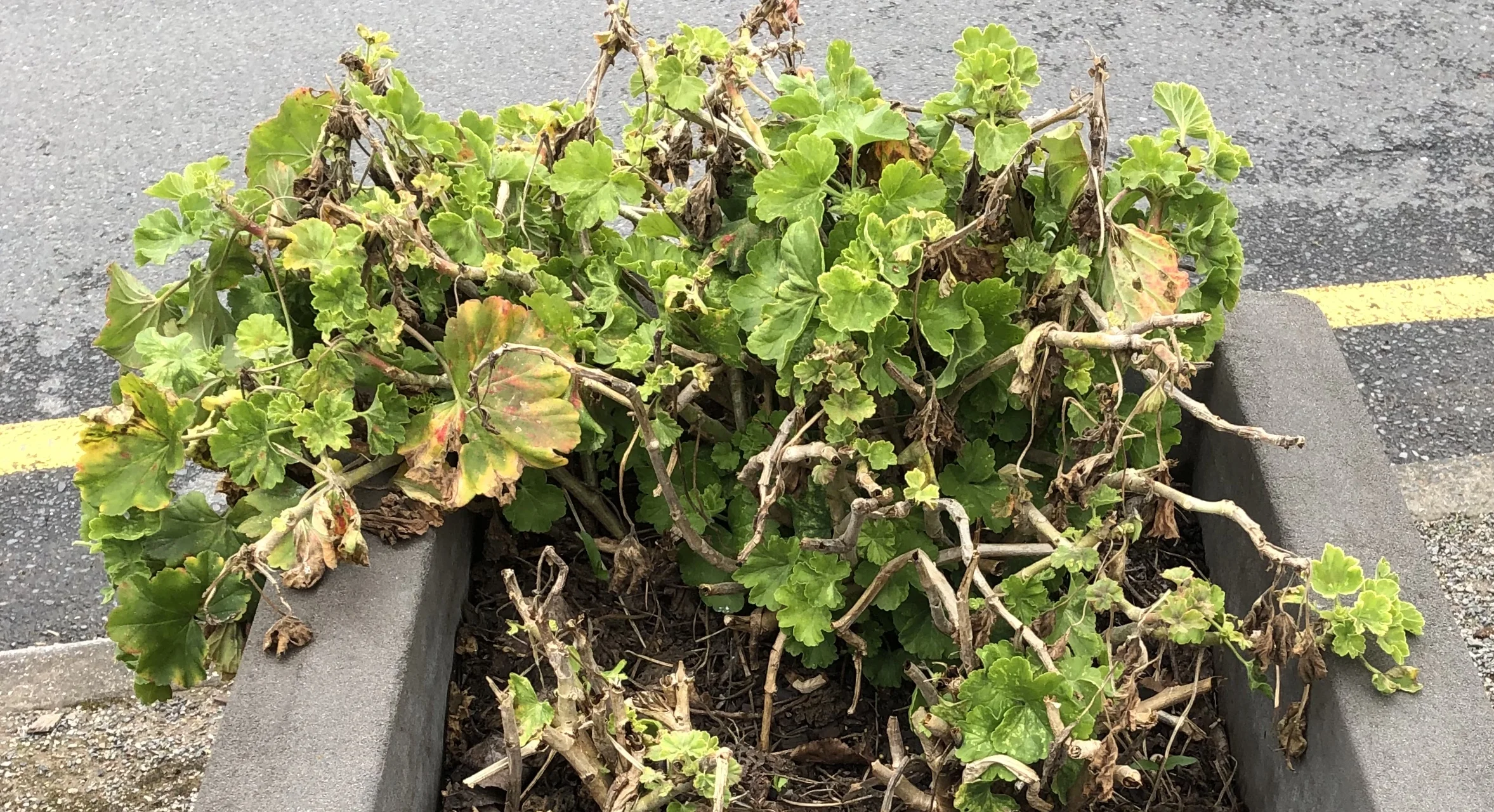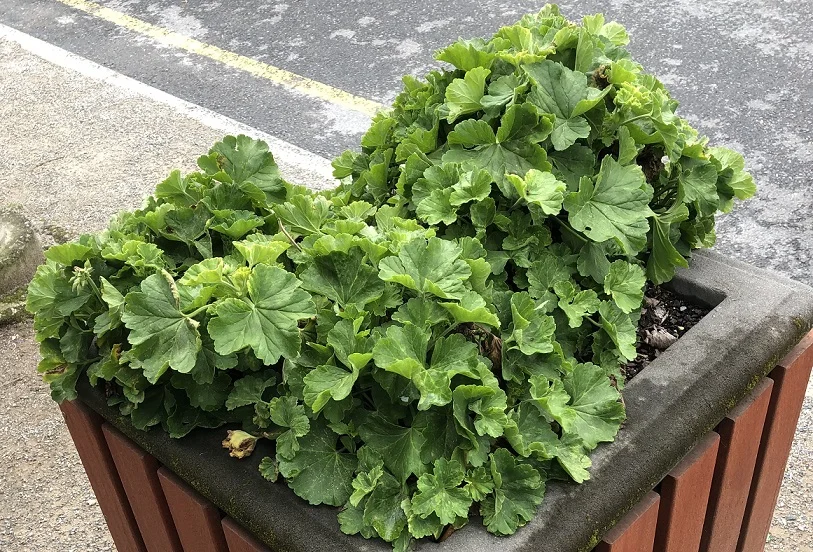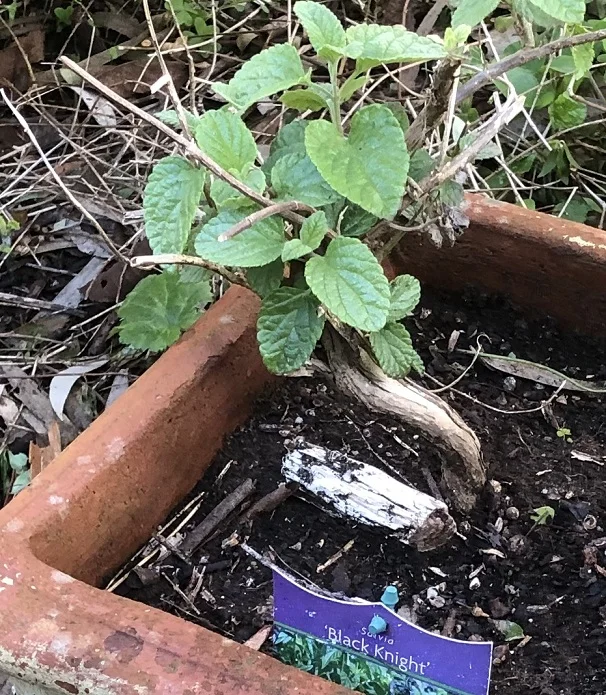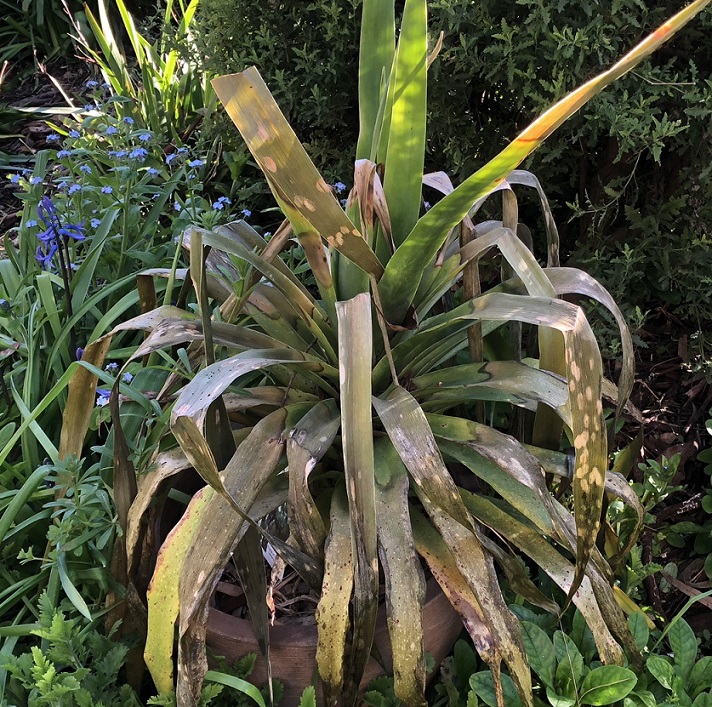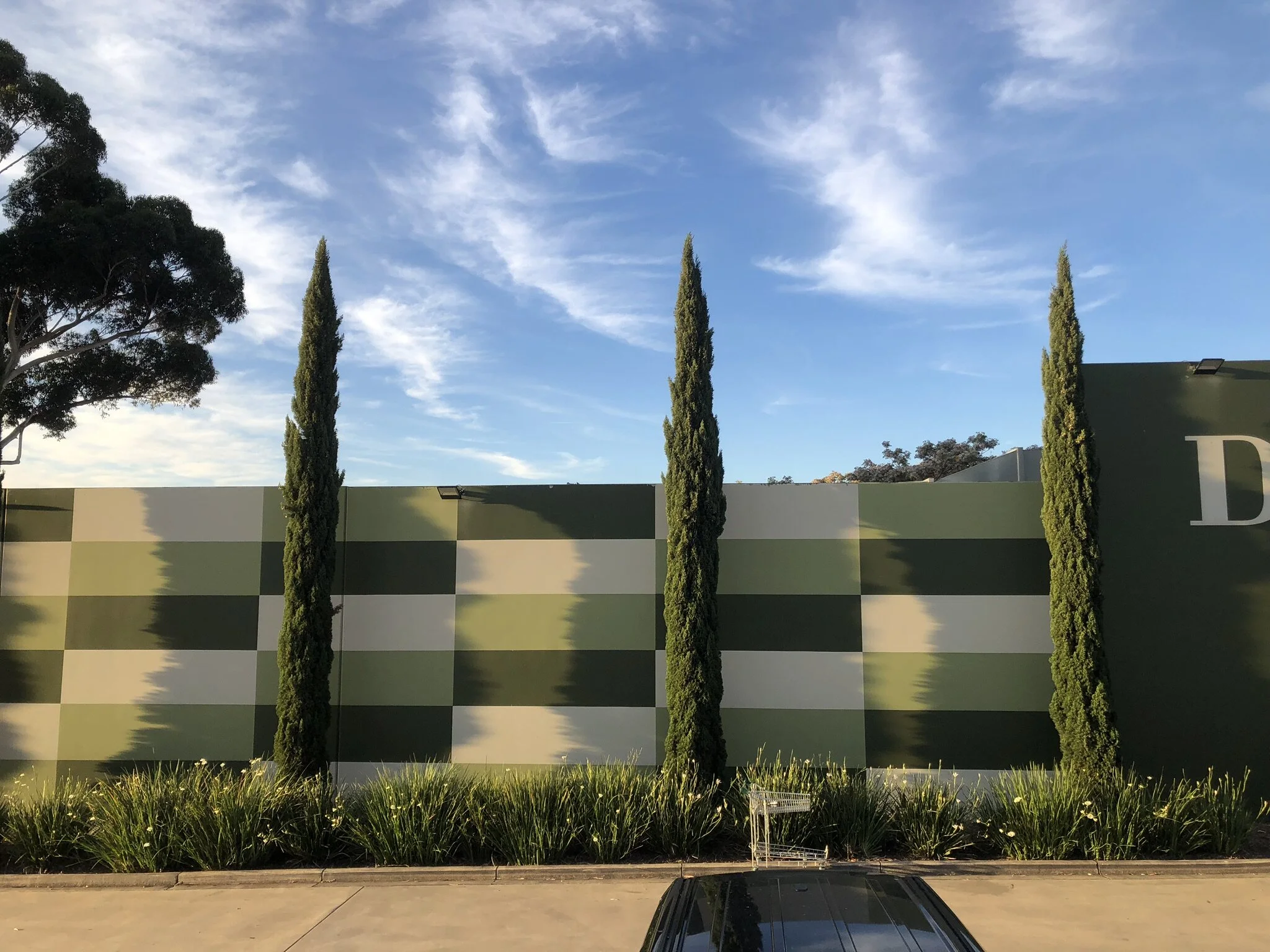Frostwatch II: Ornamental
OK so I reckon we've had about 20 frosts this year, and it isn't even a month through winter.
Right across southern & eastern Australia many will recall that early-June stretch of about 8-9 frosts in a row. What’s going on? – and this is in a wet year! (we are 100mm over the six-month average for Hahndorf, for you weather nerds). In drier years it means clearer skies & colder nights.
So it remains a good time to talk about frost. And what better focus than the ornamental garden – often the showpiece of people's properties. It is this time of year that vigour, colour & neatness really take a hit.
For more context please visit my Frostwatch intro piece that talked about frost preconditions and microclimates, then Frostwatch I: Fruit & Vegetables.
So let's turn to ornamentals. Once again I will comment on & rate some plants from my garden at or near the edge of their cold tolerance. And once again I will employ movie-style or energy-star-style ratings. Because I like them. They’re a good gimmick.
Note: some of my front garden sits under River Red Gums; this reduces the frost impact by 2-3 degrees. This is a critical difference.
Anyway let’s do this …
| Osteospermum spp ★★★★
Difficult to judge as a whole. There are hundreds of species & cultivars, some with better tolerance than others. Often known as African Daisies, they are usually tough and this is why we see them in front gardens & council groundcover work. The common Trailing African Daisy (Osteospermum fruticosum) is rock-solid but some of the cultivars with darker flowers can be susceptible. It's not just frost but the consistent impact of cold, frosty and dry weather over time that can turn the foliage & stems sickly. This isn't a big worry as they always bounce back hard in spring. |
Osteospermum fruticosum – the Trailing African Daisy. No problem with frost. And stunning in September.
Two Osteospermum cultivars – standing up to winter with the help of some paving.
| Plumbago
★★★
Well-known as frost-sensitive, however if frosts are only down to -3 the foliage will be burnt but the plant will reshoot from the base in spring. This is fine because the bush is vigorous and should be cut back hard in autumn & winter anyway. Worth persisting with in Zone 9b and 9a under canopies. |
| Bougainvillea ★★½
I’ve been waiting to talk about Bougainvilleas. I love them a great deal – especially the burgundy varieties. I have one of these, clambering up a Colorbond fence and dominating it during summer. It’s a guilty pleasure – a touch of Pacific Mexico in the Onkaparinga Valley. By any measure it should not survive here; I don’t know anyone in the Hills who has one. But it can also cop severe punishment & pull through. And this is what mine does. I give it the best chance with a north-facing aspect & tree-canopy protection. Yes it gets burned when a bad frost comes – sometimes a third of the foliage – but it is a brute & will sprout again from the good wood in November, putting on a spectacular display without fail. Give it the right conditions and it will reward you even in Zone 9b. |
| Pelargonium cultivars (Zonal)
★★
These are the common 'Geraniums' (not really Geraniums) we see around warmer towns & cities, growing out of verges & next to walls with their gaudy scarlet or pink flowers, giving the streets a particularly Mediterranean feel. Unfortunately they also happen to be frost-sensitive, so those of us in Zone 9a or even 9b have a challenge on our hands. I have several Zonal Pelargoniums & some have done very well in sheltered positions while others out in the open have suffered. In a June frost triple-strike I will lose entire plants. Best up against warm walls or other structures.
|
| Pelargonium cultivars (Regal)
★★
These are the smaller Pelargoniums with a bushy habit, jagged leaves & flashy two-tone flowers. Mine are not frost-hardy. I lost all leaves & stems above ground last year. Fortunately the root system hung in there & new growth sprung from under the burnt leaves in spring. Worth persisting with in sheltered positions. |
Probably a Geranium (Pelargonium) ‘Calliope Big Red’ on Hahndorf Main Street in August 2019 – out in the open & struggling!
The same type of ‘Calliope Big Red’ just 15m away – underneath a tree canopy & much healthier!
| Ivy Geranium (Pelargonium peltatum)
★★★★
I have a white Ivy Geranium in a pot and it has done swimmingly well for five years, albeit half under a verandah. The parent plant (from which I took a sneaky cutting) grows in the open just out of town in a frosty spot. I suspect -5 or -6 might challenge it, based on what I've read. |
| Oak-leaf Geranium (Pelargonium quercifolium)
★★★★★
A species native to the eastern inland region of the Western Cape Province of South Africa (I enjoyed saying that). It is rock-solid, even when rock-solid with frost. It will get some leaf damage & sometimes go semi-deciduous, but the underlying plant will stay strong. |
| Lemon-scented Geranium (Pelargonium crispum)
★★★★
Similar to the Oak-leaf Geranium & from a similar area. Tough. |
| Pelargonium (chocolate/maroon flowers)
★★★★★
I can't ID this plant but it is quite common in the Hills. It has slightly trailing branches, grows to about 1 x 1m and has very dark chocolate coloured flowers. It stands up to extreme weather including frost. |
| Californian Poppy
★★★
Generally frost-tolerant, but this doesn’t mean it thrives. To my surprise I’ve found that Californian Poppies dislike extremes of hot & cold. Heatwaves are a real risk – especially to plants in pots. And frosts will also set plants back. |
| Marguerite Daisy (Felicia amelloides)
★★★★
Typical tough South African perennial daisy. It can get dead stems in really exposed spots, but this is more due to the combination of dry subsoil after summer, persistent cold & attacks from borers. |
| Lavatera spp.
★★
A great genus – sorely underrated in the Mediterranean garden. We really should see more of them. The cultivar 'Lilac Lady' is the pinnacle. Sadly most species and cultivars are not frost-tolerant, hailing from southern Europe, northern Africa and nearby (goddamn frost-free) islands. The most frost-tolerant species is Lavatera maritima, and this only handles light frosts. It is the most common variety too. I picked my handful up at a supermarket for $2.49 each. Bargain. |
| Skyberry (Duranta erecta)
★★½
Like my Bougainvillea this is a treasured subtropical showpiece I have managed to trick into liking my garden – via careful site selection & microclimate creation. Native to Mexico, South America and the Caribbean, its foliage is frost-sensitive but the plant is otherwise very hardy & will bounce back in spring. The species is the basis for many popular cultivars such as ‘Geisha Girl’, which has two-tone purple & white flowers and is often trained as a standard. This is the only plant apart from Bougainvillea I have ever seen grown in street plantings in both Darwin and the Adelaide Hills! (does anyone else care about these things?) A word of caution - the above lavish praise only applies for Mediterranean gardens of the south and west. On much of the East Coast Duranta is considered a noxious weed! |
| Salvia ‘Waverly’
★★★
The peerless Robin's Salvias website sums up S 'Waverly' as follows: This is thought to be a hybrid of S. leucantha and S. chiapensis discovered in California. I can easily see the resemblance to S. leucantha but I am not sure where S. chiapensis comes in. But I will go along with the experts.' How can writing be so dry & on-point, obsessed with good detail? I am including it here because I can't top it. The only thing I will add is that it is moderately frost-tolerant down to about -3. Which is fine as plants need cutting to the ground once a year in any case. |
| Salvia ‘Anthony Parker’
★★★
Ditto. |
Salvia ‘Black Knight’ – more like the Black Knight in Monty Python after a few frosts.
| Salvia ‘African Sky’
★★★★
Cross between S chamelaeagnea and S scabra. Has inherited the tougher qualities of both species. Frost-tolerant to at least -4. Will get a little damage. Stunning plant with cobalt blue flowers. |
| Salvia microphylla x greggii (various)
★★★★★
Series of hybrids (several dozen) with a wide range of flower colours. Most are excellent in a Mediterranean garden. With Mexican highland desert parentage on both sides, they have that typical frost tolerance to about -3 but no more. Very good performers in Zone 10 & 9b but in 9a they need careful microclimate selection. Most cultivars are worth a try as they capture the strengths of both parents without the weaknesses. |
My prized young Canary Islands Dragon Tree (Dracaena draco) – cooked!




